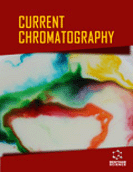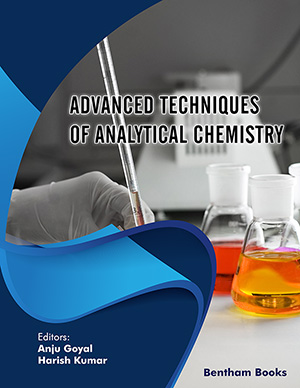Abstract
Background: Withanolide glycosides in Ashwagandha (Withania somnifera), are important metabolites attributed with widely acclaimed therapeutic potential for which validated methods for quantitative determination are limited.
Objective: The primary objective was to develop and validate a Reversed-Phase High Performance Liquid Chromatography (RP-HPLC) method for simultaneous quantification of total withanolide glycosides (WG), withanoside IV and withaferin A present in ashwagandha extract.The study also aimed to identify various other constituents present in the extract. Materials and Methods: Aqueous methanol extract (AME) of Ashwagandha was prepared and fractionated into two viz. flavonoid rich fraction (FF) and withanolide rich fraction (WF). RP-HPLC method was developed and validated for the estimation of total WG in ashwagandha extract according to ICH guidelines. Preparative HPLC based purification of major compounds from WF fraction was carried out and constituents were identified using spectroscopic techniques. HPLC chemical profiling of WF before and after acid hydrolysis under controlled conditions was carried out to further confirm the glycosidic compounds. Results and Discussion: The RP-HPLC method gave a precise differentiation of flavonoids, withanolides and WG present in ashwagandha extract. The method demonstrated good reliability and sensitivity, and can be conveniently used for the quantification of total WG, withanoside IV and withaferin A present in ashwagandha extracts. According to this method, a purified fraction (WF) prepared from roots and leaves of Ashwagandha comprise 35% of total WG, 3.27% of withanoside IV and 2.40% of Withaferin A. The method was also applied to different products prepared from Ashwagandha with total withanolide glycosides ranged from 1.5% to 60%, and the results were found to be reproducible. Identification of the individual chemical constituents as well as the acid hydrolytic pattern of the extract further supported the reliability of the developed method for the quantitative determination of total WG. This study also reported a new withanolide glycoside named, cilistol V-6’-O-glucoside (Aswanoside) along with some other known withanolide glycosides. Conclusion: A Reversed-Phase High Performance Liquid Chromatography (RP-HPLC) method was developed and validated for the quantitative determination of total WG, withanoside IV and withaferin A present in ashwagandha extract according to ICH guidelines. This study also reported a new withanolide glycoside named, cilistol V-6’-O-glucoside (Aswanoside) along with some other known WG.Keywords: Withania somnifera, ashwagandha, HPLC, validation, withanolide glycosides, withaferin A, withanoside IV, aswanoside.
[1]
Sukanya DH, Lokesha AN, Datta G, Himabindu K. Phytochemical diversity in ashwagandha (Withania somnifera). J Med Aromat Plants 2010; 1(2)
[2]
Belmaker RH, Agam G. Major depressive disorder. N Engl J Med 2008; 358(1): 55-68.
[http://dx.doi.org/10.1056/NEJMra073096] [PMID: 18172175]
[http://dx.doi.org/10.1056/NEJMra073096] [PMID: 18172175]
[3]
Bharathi P, Seshayamma V, Jagannadharao GH, Sivakumar N. Evaluation of antidepressant activity of aqueous extract of Withania somnifera [Ashwagandha] roots in albino mice. IOSR J Pharm Biol Sci 2015; 10(1): 27-9.
[4]
Dhar N, Razdan S, Rana S, Bhat WW, Vishwakarma R, Lattoo SK. A decade of molecular understanding of withanolide biosynthesis and in vitro studies in Withania somnifera (L.) Dunal: Prospects and perspectives for pathway engineering. Front Plant Sci 2015; 6: 1031.
[http://dx.doi.org/10.3389/fpls.2015.01031] [PMID: 26640469]
[http://dx.doi.org/10.3389/fpls.2015.01031] [PMID: 26640469]
[5]
Schechter LE, Ring RH, Beyer CE, et al. Innovative approaches for the development of antidepressant drugs: Current and future strategies. NeuroRx 2005; 2(4): 590-611.
[http://dx.doi.org/10.1602/neurorx.2.4.590] [PMID: 16489368]
[http://dx.doi.org/10.1602/neurorx.2.4.590] [PMID: 16489368]
[6]
Umadevi P, Murugan S, Jennifer Suganthi S, Subakanmani S. Evaluation of antidepressant like activity of Cucurbita pepo seed extracts in rats. Int J Curr Pharm Res 2011; 3(1): 108-13.
[7]
Viña D, Serra S, Lamela M, Delogu G. Herbal natural products as a source of monoamine oxidase inhibitors: A review. Curr Top Med Chem 2012; 12(20): 2131-44.
[http://dx.doi.org/10.2174/156802612805219996] [PMID: 23231392]
[http://dx.doi.org/10.2174/156802612805219996] [PMID: 23231392]
[8]
Zhang ZJ. Therapeutic effects of herbal extracts and constituents in animal models of psychiatric disorders. Life Sci 2004; 75(14): 1659-99.
[http://dx.doi.org/10.1016/j.lfs.2004.04.014] [PMID: 15268969]
[http://dx.doi.org/10.1016/j.lfs.2004.04.014] [PMID: 15268969]
[9]
Bhattacharya SK, Satyan KS, Ghosal S. Antioxidant activity of glycowithanolides from Withania somnifera. Indian J Exp Biol 1997; 35(3): 236-9.
[PMID: 9332168]
[PMID: 9332168]
[10]
Davis L, Kuttan G. Immunomodulatory activity of Withania somnifera. J Ethnopharmacol 2000; 71(1-2): 193-200.
[http://dx.doi.org/10.1016/S0378-8741(99)00206-8] [PMID: 10904163]
[http://dx.doi.org/10.1016/S0378-8741(99)00206-8] [PMID: 10904163]
[11]
Kuboyama T, Tohda C, Komatsu K. Neuritic regeneration and synaptic reconstruction induced by withanolide A. Br J Pharmacol 2005; 144(7): 961-71.
[http://dx.doi.org/10.1038/sj.bjp.0706122] [PMID: 15711595]
[http://dx.doi.org/10.1038/sj.bjp.0706122] [PMID: 15711595]
[12]
Mathur S, Kaur P, Sharma M, et al. The treatment of skin carcinoma, induced by UV B radiation, using 1-oxo-5β, 6β-epoxy-witha-2-enolide, isolated from the roots of Withania somnifera, in a rat model. Phytomedicine 2004; 11(5): 452-60.
[http://dx.doi.org/10.1016/j.phymed.2003.05.004] [PMID: 15330502]
[http://dx.doi.org/10.1016/j.phymed.2003.05.004] [PMID: 15330502]
[13]
Mendez SL. A.; Virginia Garcia, C.; EB da Silva, F.; Reisdorfer Paula, F. Identification and quantification methodologies for active substances in natural products: The hole of chromatographic and spectroscopic techniques. Curr Chromatogr 2015; 2(1): 2-19.
[http://dx.doi.org/10.2174/2213240601666141126205140]
[http://dx.doi.org/10.2174/2213240601666141126205140]
[14]
Edwards M, Boswell H, Górecki T. Comprehensive multidimensional chromatography. Curr Chromatogr 2015; 2(2): 80-109.
[http://dx.doi.org/10.2174/2213240602666150722232236]
[http://dx.doi.org/10.2174/2213240602666150722232236]
[15]
Hanai T. Definition of HILIC system and quantitative analysis of retention mechanisms. Curr Chromatogr 2018; 5(1): 43-52.
[http://dx.doi.org/10.2174/2213240605666180207093716]
[http://dx.doi.org/10.2174/2213240605666180207093716]
[16]
Ali IA, Al-Othman Z, Al-Warthan AY, Aboul-Enein H. Recent trends in chiral separations by nano liquid chromatography and nano capillary electrophoresis. Curr Chromatogr 2014; 1(2): 81-9.
[http://dx.doi.org/10.2174/2213240601666140301001948]
[http://dx.doi.org/10.2174/2213240601666140301001948]
[17]
Al-Othman ZA, Al-Warthan A, Ali I. Advances in enantiomeric resolution on monolithic chiral stationary phases in liquid chromatography and electrochromatography. J Sep Sci 2014; 37(9-10): 1033-57.
[http://dx.doi.org/10.1002/jssc.201301326] [PMID: 24634395]
[http://dx.doi.org/10.1002/jssc.201301326] [PMID: 24634395]
[18]
Aboul-Enein HY, Ali I. Comparison of the chiral resolution of econazole, miconazole, and sulconazole by HPLC using normal-phase amylose CSPs. Fresenius J Anal Chem 2001; 370(7): 951-5.
[http://dx.doi.org/10.1007/s002160100884] [PMID: 11569882]
[http://dx.doi.org/10.1007/s002160100884] [PMID: 11569882]
[19]
Ali I, Al-Othman ZA, Al-Warthan A, Asnin L, Chudinov A. Advances in chiral separations of small peptides by capillary electrophoresis and chromatography. J Sep Sci 2014; 37(18): 2447-66.
[http://dx.doi.org/10.1002/jssc.201400587] [PMID: 25044566]
[http://dx.doi.org/10.1002/jssc.201400587] [PMID: 25044566]
[20]
Kaufmann B, Souverain S, Cherkaoui S, Christen P, Veuthey JL. Rapid liquid chromatographic-mass spectrometric analysis of withanolides in crude plant extracts by use of a monolithic column. Chromatographia 2002; 56(3-4): 137-41.
[http://dx.doi.org/10.1007/BF02493201]
[http://dx.doi.org/10.1007/BF02493201]
[21]
Khajuria RK, Suri KA, Gupta RK, et al. Separation, identification, and quantification of selected withanolides in plant extracts of Withania somnifera by HPLC-UV(DAD)--positive ion electrospray ionisation-mass spectrometry. J Sep Sci 2004; 27(7-8): 541-6.
[http://dx.doi.org/10.1002/jssc.200301690] [PMID: 15335037]
[http://dx.doi.org/10.1002/jssc.200301690] [PMID: 15335037]
[22]
Chaurasiya ND, Uniyal GC, Lal P, et al. Analysis of withanolides in root and leaf of Withania somnifera by HPLC with photodiode array and evaporative light scattering detection. Phytochem Anal 2008; 19(2): 148-54.
[http://dx.doi.org/10.1002/pca.1029] [PMID: 17879227]
[http://dx.doi.org/10.1002/pca.1029] [PMID: 17879227]
[23]
Chatterjee S, Srivastava S, Khalid A, et al. Comprehensive metabolic fingerprinting of Withania somnifera leaf and root extracts. Phytochemistry 2010; 71(10): 1085-94.
[http://dx.doi.org/10.1016/j.phytochem.2010.04.001] [PMID: 20483437]
[http://dx.doi.org/10.1016/j.phytochem.2010.04.001] [PMID: 20483437]
[24]
Srivastava P, Tiwari N, Yadav AK, et al. Simultaneous quantification of withanolides in Withania somnifera by a validated high-performance thin-layer chromatographic method. J AOAC Int 2008; 91(5): 1154-61.
[PMID: 18980134]
[PMID: 18980134]
[25]
Sharma V, Gupta AP, Bhandari P, Gupta RC, Singh B. A validated and densitometric HPTLC method for the quantification of Withaferin-A and Withanolide-A in different plant parts of two morphotypes of Withania somnifera. Chromatographia 2007; 66(9-10): 801-4.
[http://dx.doi.org/10.1365/s10337-007-0396-2]
[http://dx.doi.org/10.1365/s10337-007-0396-2]
[26]
Sangwan RS, Chaurasiya ND, Lal P, et al. Withanolide A biogeneration in in vitro shoot cultures of ashwagandha (Withania somnifera DUNAL), a main medicinal plant in Ayurveda. Chem Pharm Bull (Tokyo) 2007; 55(9): 1371-5.
[http://dx.doi.org/10.1248/cpb.55.1371] [PMID: 17827764]
[http://dx.doi.org/10.1248/cpb.55.1371] [PMID: 17827764]
[27]
Chauhan S, Joshi A, Jain R, Jain D. Estimation of withanolide A in diverse genotypes of Ashwagandha Withania somnifera (L.). Dunal Indian J Exp Biol 2019; 57(03): 212-7.
[28]
Manwar JV, Mahadik KR, Paradkar AR, Takle SP, Sathiyanarayanan L, Patil SV. Determination of withanolides from the roots and herbal formulation of Withania somnifera by HPLC using DAD and ELSD detector. Der Pharm Sin 2012; 3(1): 41-6.
[29]
Mundkinajeddu D, Sawant LP, Koshy R, et al. Development and validation of high performance liquid chromatography method for simultaneous estimation of flavonoid glycosides in Withania somnifera aerial parts. ISRN Anal Chem 2014; 2014
[http://dx.doi.org/10.1155/2014/351547]
[http://dx.doi.org/10.1155/2014/351547]
[30]
Ali I, Al-Othman ZA, Nagae N, Gaitonde VD, Dutta KK. Recent trends in ultra-fast HPLC: New generation superficially porous silica columns. J Sep Sci 2012; 35(23): 3235-49.
[http://dx.doi.org/10.1002/jssc.201200454] [PMID: 23184368]
[http://dx.doi.org/10.1002/jssc.201200454] [PMID: 23184368]
[31]
USP35–NF30 Page 1197 Pharmacopeial Forum 35(4): 888.https://www.drugfuture.com/Pharmacopoeia/USP35/data/v35300/usp35nf30s0_m2789.htht
[32]
Chen LX, He H, Qiu F. Natural withanolides: An overview. Nat Prod Rep 2011; 28(4): 705-40.
[http://dx.doi.org/10.1039/c0np00045k] [PMID: 21344104]
[http://dx.doi.org/10.1039/c0np00045k] [PMID: 21344104]
[33]
Matsuda H, Murakami T, Kishi A, Yoshikawa M. Structures of withanosides I, II, III, IV, V, VI, and VII, new withanolide glycosides, from the roots of Indian Withania somnifera DUNAL. and inhibitory activity for tachyphylaxis to clonidine in isolated guinea-pig ileum. Bioorg Med Chem 2001; 9(6): 1499-507.
[http://dx.doi.org/10.1016/S0968-0896(01)00024-4] [PMID: 11408168]
[http://dx.doi.org/10.1016/S0968-0896(01)00024-4] [PMID: 11408168]
[34]
Zhao J, Nakamura N, Hattori M, Kuboyama T, Tohda C, Komatsu K. Withanolide derivatives from the roots of Withania somnifera and their neurite outgrowth activities. Chem Pharm Bull (Tokyo) 2002; 50(6): 760-5.
[http://dx.doi.org/10.1248/cpb.50.760] [PMID: 12045329]
[http://dx.doi.org/10.1248/cpb.50.760] [PMID: 12045329]
[35]
Jayaprakasam B, Nair MG. Cyclooxygenase-2 enzyme inhibitory withanolides from Withania somnifera leaves. Tetrahedron 2003; 59(6): 841-9.
[http://dx.doi.org/10.1016/S0040-4020(02)01601-0]
[http://dx.doi.org/10.1016/S0040-4020(02)01601-0]
[36]
Zhang H, Samadi AK, Gallagher RJ, et al. Cytotoxic withanolide constituents of Physalis longifolia. J Nat Prod 2011; 74(12): 2532-44.
[http://dx.doi.org/10.1021/np200635r] [PMID: 22098611]
[http://dx.doi.org/10.1021/np200635r] [PMID: 22098611]
[37]
Zhu XH, Ando J, Takagi M, Ikeda T, Nohara T. Six new withanolide-type steroids from the leaves of Solanum cilistum. Chem Pharm Bull (Tokyo) 2001; 49(2): 161-4.
[http://dx.doi.org/10.1248/cpb.49.161] [PMID: 11217102]
[http://dx.doi.org/10.1248/cpb.49.161] [PMID: 11217102]
Article Metrics
 21
21

















